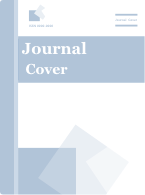投稿信息
稿件收錄要求
Clocks & Sleep?(C&S; ISSN 2624-5175) is a multidisciplinary, peer-reviewed, open access journal publishing original research covering all aspects of biological rhythms and sleep in all organisms. Significant topics addressed by the journal include sleep research on cell cultures and clinical studies in patients with any condition or disease of the circadian system, or associated sleep disruptions.?Clocks & Sleep?focuses on genetic, molecular, biochemical, neurological, neuroendocrine, behavioral, physiological, cognitive, and epidemiological factors and brain imaging, dreams, modeling, shiftwork, and clinical approaches and/or topics. We welcome original articles, reviews, short communications, and case reports on basic research, clinical research, and applied science.
Scope
- Circadian and sleep physiology and their interactions;
- Circadian and sleep-related disorders in psychiatry, psychology, and neurology;
- Biological rhythms (circadian, seasonal, ultradian) and Zeitgebers (light, melatonin);
- Sleep habits and health, daytime functioning and quality of life;
- Cultural, historical, and societal aspects of sleep;
- Sleep and circadian monitoring and assistance technology: wearables and nearables;
- Computational modeling in the sleep and circadian fields;
- Sleep–wake behavior and the 24 h society/life-style;
- Environmental effects on sleep;
- Biological rhythms and sleep-like behaviors in non-animal species and cell cultures.
Clocks & Sleep comprises the following Sections:
- Animal Basic Research;
- Human Basic Research & Neuroimaging;
- Computational Models;
- Impact of Light & other Zeitgebers;
- Disorders;
- Society;
- Open & Reproducible Science.




